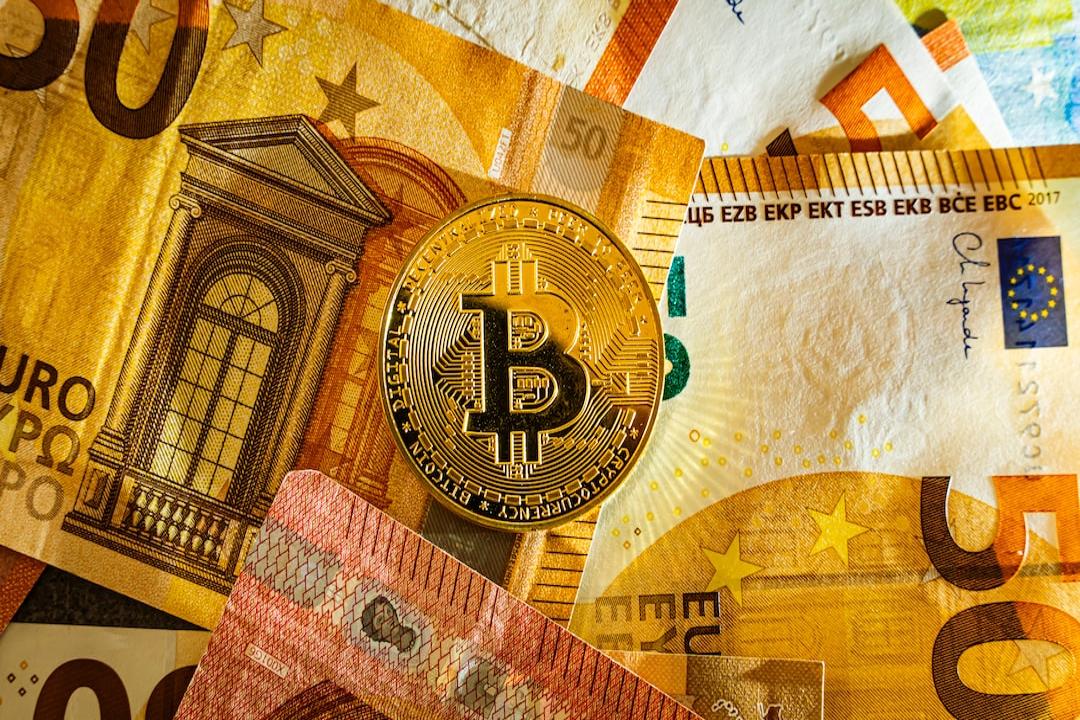With the possible approval of the spot ETF as early as January, liquidity is expected to quickly recover. This article attempts to calculate the possible market trends, but it should not be taken as investment advice and is for reference only.
(Bitcoin Market Depth)
(Bitcoin Trading Volume)
(Bitcoin Dominance)
(Conclusion)
With the possible approval of the spot ETF as early as January, liquidity is expected to quickly recover. Since the collapse of FTX, we have been closely monitoring the liquidity of cryptocurrencies, and the trading volume and order depth of all assets on all exchanges have declined significantly, even though the market has recently rebounded, it has failed to restore the depth or trading volume to the levels before the collapse of FTX.
However, with the possible approval of the spot ETF as early as January, liquidity is expected to quickly recover (despite some negative impacts). There are two ways this may happen:
1. Liquidity transfer through trading;
2. Liquidity transfer through market makers (MM).

In terms of “ETF will increase liquidity,” there is a convincing argument that ETFs will expand the number of cryptocurrency traders, thereby increasing trading volume and market efficiency. Market makers will also benefit from ETFs as hedging tools and may expand their activities.
In terms of “ETF will harm liquidity,” people are genuinely concerned that the massive outflow of funds from ETFs may bring selling pressure to the underlying market. In terms of market makers, they may charge higher spreads due to a larger number of informed traders.
Let’s take a look at the liquidity situation of Bitcoin to understand its impact.
The collapse of FTX led to a significant decrease in Bitcoin market depth. FTX’s sudden disappearance not only reduced liquidity but also caused market makers to close positions on many exchanges due to heavy losses and difficult market conditions.
The 1% market depth measures the quantity of buy and sell orders within 1% of the price range on the order book. At this level, the market depth of all exchanges and trading pairs has decreased from about $580 million to about $230 million.

The recent market rebound has had a negligible impact on liquidity, and the slight growth observed is mainly due to price effects.
Why is market depth important for ETFs? ETF issuers need to buy and sell underlying assets. Although it is currently unclear where they will perform this operation (spot exchanges, OTC trading, or miners), it is likely that at some point, the flow of centralized spot exchanges will increase, especially considering that so many ETFs will be approved immediately.
From the perspective of arbitrageurs, liquidity is also important. The price of an ETF needs to track the underlying assets, which can be achieved through buying and selling whenever there is a premium or discount. Illiquid markets can cause more frequent price discrepancies, making arbitrageurs’ work more complicated, so liquidity is crucial for market efficiency.
Cryptocurrency exchanges in the United States, in particular, can play a crucial role in spot ETFs—they currently account for about 45% of the global BTC market depth.

Throughout 2023, Kraken had the best average BTC trading depth, with a depth of $32.9 million within the 1% price range. Coinbase ranked second with $24.3 million. Binance’s average market depth is shown in red for reference.
If more informed investors enter the Bitcoin market, the approval of ETFs may also affect trading costs. In the past year, the costs incurred by traders in the form of spreads have mostly improved since last year, which may be due to lower price volatility.

In summary, Bitcoin market depth has remained stable for most of this year (with no change in liquidity), and spreads have mostly narrowed (reducing trader costs). But the approval of ETFs may change this situation.
The impact of FTX on trading volume is much smaller than that on market depth, accounting for less than 7% of global trading volume. Since November last year, there has been greater volatility in trading volume. In the first three months of 2023, the trading volume remained high, but it plummeted after the banking crisis in March and reached multi-year lows in the summer.

With the recent rebound, we have seen a slight recovery in the past few months, but overall, the trading volume is still far below the levels before FTX.
Therefore, when comparing trading volume with market depth, we can observe that the depth has decreased much more since November 2022, but the volatility throughout the year is much smaller than the trading volume. This indicates that the level of market-making activity remains unchanged, with no new entrants (or exits).

Bitcoin remains the most liquid cryptocurrency to date and has proven to be the most resilient in challenging market conditions. ETFs may further consolidate its dominant position.
From the distribution of trading volume in the past year, we can see that the average Bitcoin trading volume is three times that of Ethereum and more than 10 times that of the top 10 altcoins. It is worth noting that Binance’s zero-fee Bitcoin trading promotion intensified this trend in the spring.

Bitcoin’s average market depth is very similar to that of Ethereum, although it is still much larger than most altcoins.

Bitcoin is the most liquid cryptocurrency to date. However, since the collapse of FTX, both of these liquidity indicators have decreased significantly, with only a slight recovery in the past few months.
Therefore, the approval of ETFs is currently the biggest catalyst for the cryptocurrency market, with the potential for significant upside potential and limited downside. Despite some liquidity risks, if investors’ appetite increases significantly, ETFs may greatly improve the market situation.

Related Reports
Bitcoin Spot ETF Approval Date: Galaxy Digital Predicts Approval by the SEC Before January 10, 2024, Following the Clearance of the Grayscale Lawsuit
2024 is the Bull Market! Michael Saylor: BTC Spot ETF is the Most Important Development on Wall Street in 30 Years
Contrary to the SEC: Grayscale Requests GBTC to Enable “Physical Redemption” and Calls for Approval of All Bitcoin Spot ETFs
Tags:
Bitcoin spot ETF
Liquidity


